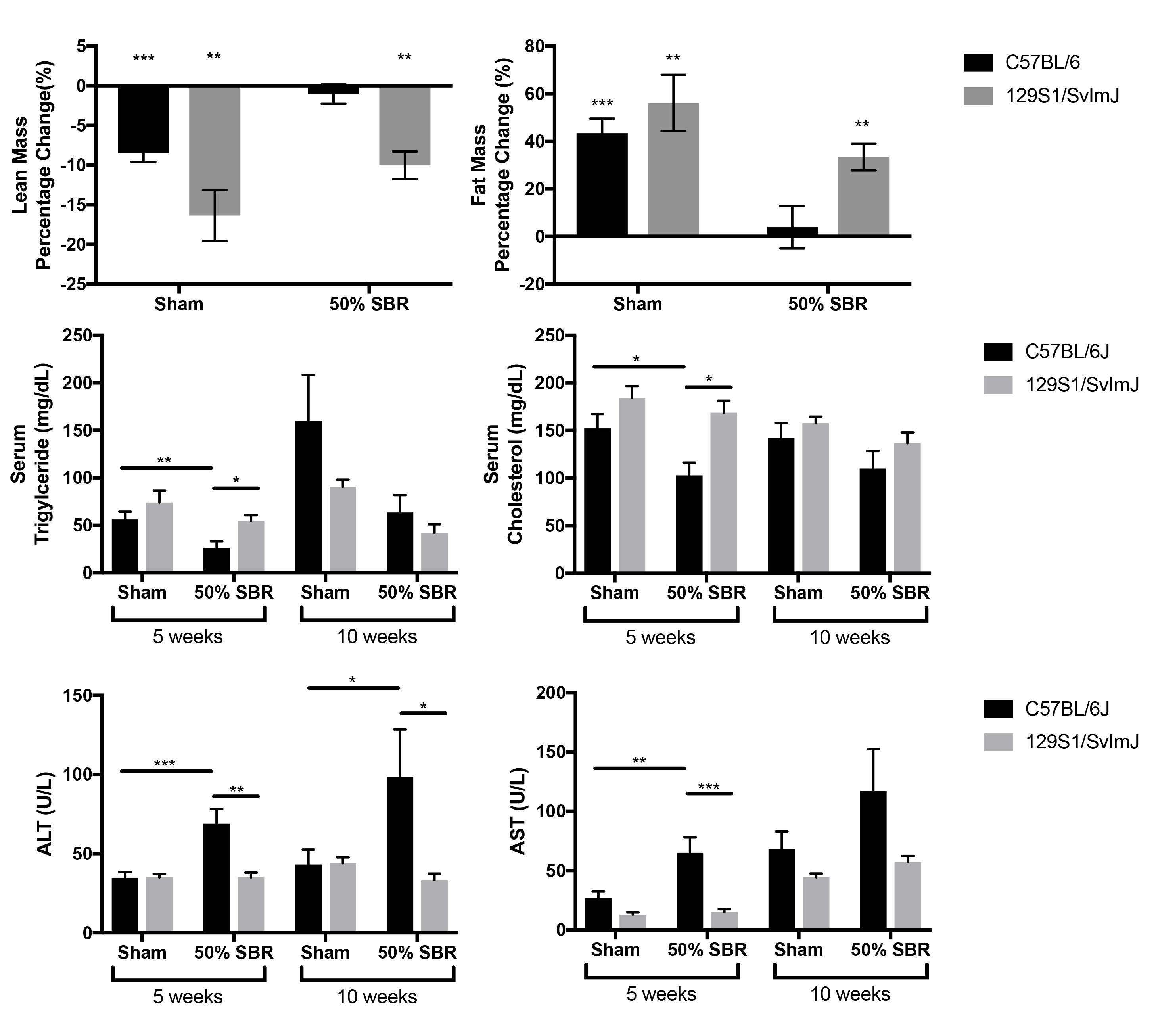E. J. Onufer1, J. Ou1, C. Courtney1, S. Sutton1, R. Czepielewski2, Y. Han2, G. Randolph2, B. W. Warner1 1Washington University in St. Louis,Surgery,St. Louis, MO, USA 2Washington University in St. Louis,Immunology,St. Louis, MO, USA
Introduction: Intestinal failure-associated liver disease (IFALD) is a major morbidity associated with short gut syndrome (SGS) and negatively impacts survival. The development of IFALD begins with steatosis and progresses to fibrosis, ultimately leading to cirrhosis. Given this pathology, we sought to determine if liver injury after small bowel resection (SBR) could be prevented in a unique mouse strain that is obesity-resistant (129S1/SvImJ).
Methods: Using our previously characterized TPN-independent model of resection-associated liver injury, C57BL/6 and 129S1/SvImJ mice underwent a 50% proximal SBR or sham operation. Body composition was assessed at baseline and 10-weeks post-operatively. At post-operative week 5 and 10, we also quantified serum triglyceride, alanine aminotransferase (ALT), and aspartate aminotransferase (AST) levels. Liver triglyceride levels were determined after homogenization with lipid extraction and normalization to hepatic protein concentration.
Results: Body composition from week 10 to baseline revealed a significantly greater decrease in lean mass with no difference in fat mass in 129S1/SvImJ compared to C57BL/6 mice in both operative groups. Serum triglyceride and cholesterol levels were significantly elevated in 129S1/SvImJ SBR mice at 5 weeks compared to C57BL/6, with no difference at 10 weeks. Hepatic triglyceride levels were no different between mouse strains. Serum ALT and AST were significantly elevated in C57BL/6 SBR mice compared to sham mice at 5 and 10 weeks; these effects were mitigated in 129S1/SvImJ mice. (Figure 1; *p<0.05, **p<0.01, ***p<0.0005).
Conclusion: Despite high levels of serum lipids,129S1/SvImJ mice do not develop liver inflammation and injury after SBR, unlike C57BL/6 mice. Further studies are needed to understand the mechanism behind resistance to IFALD development in 129S1/SvImJ.
